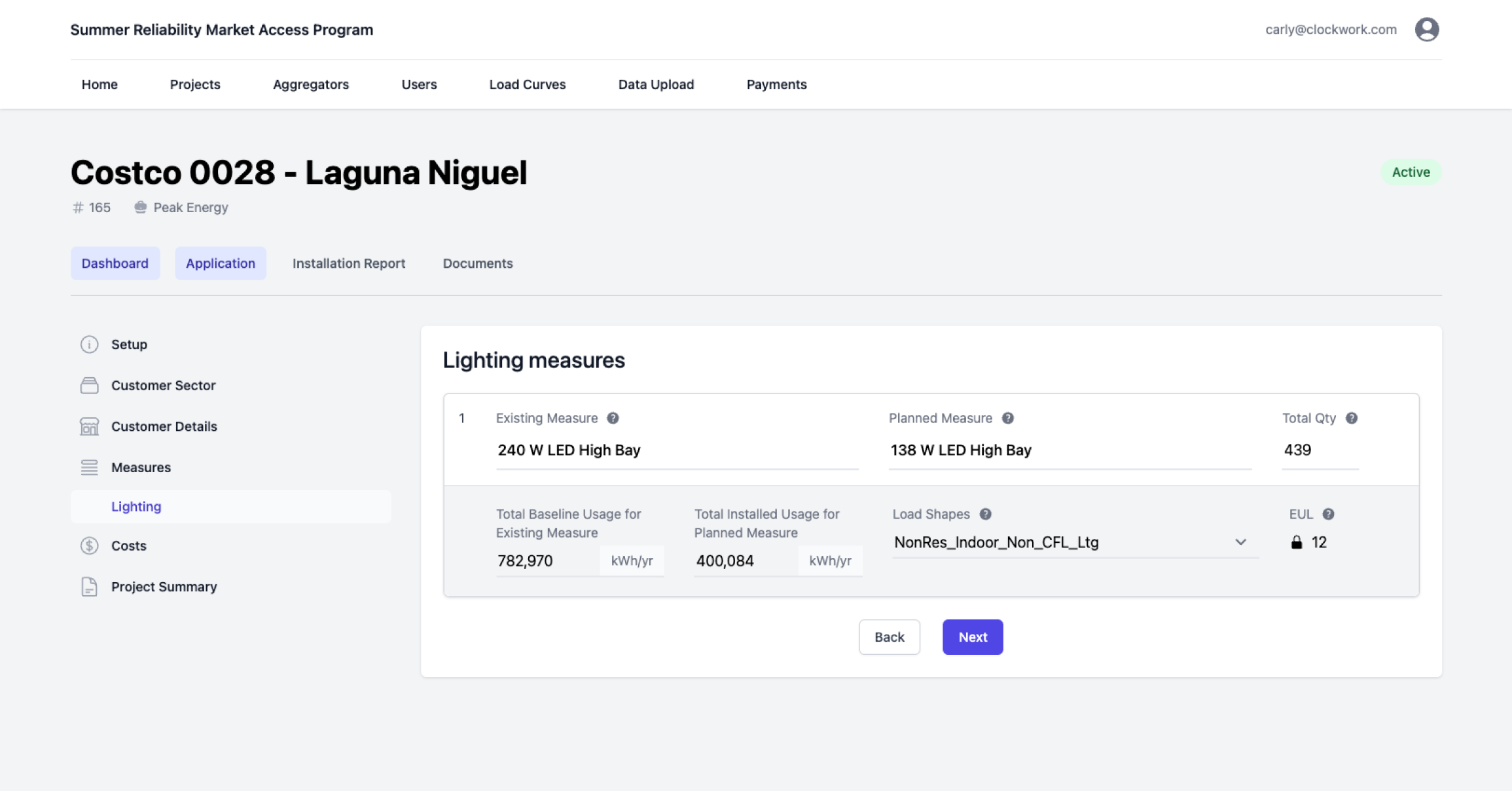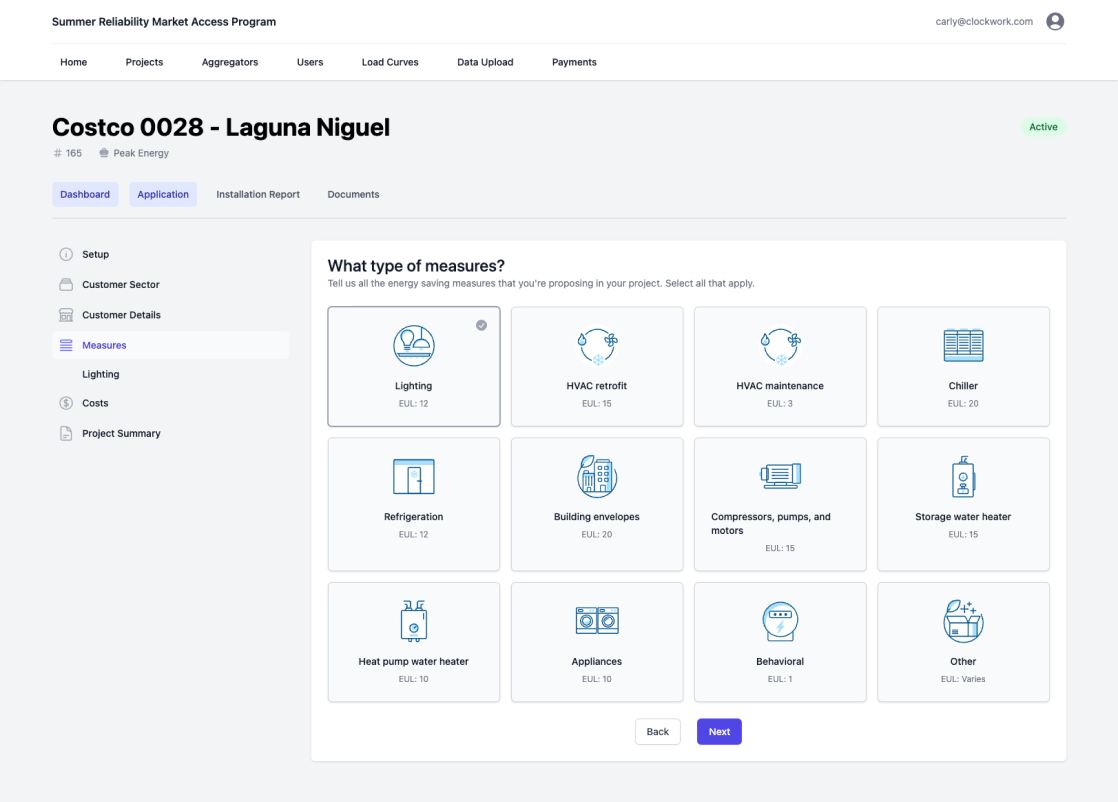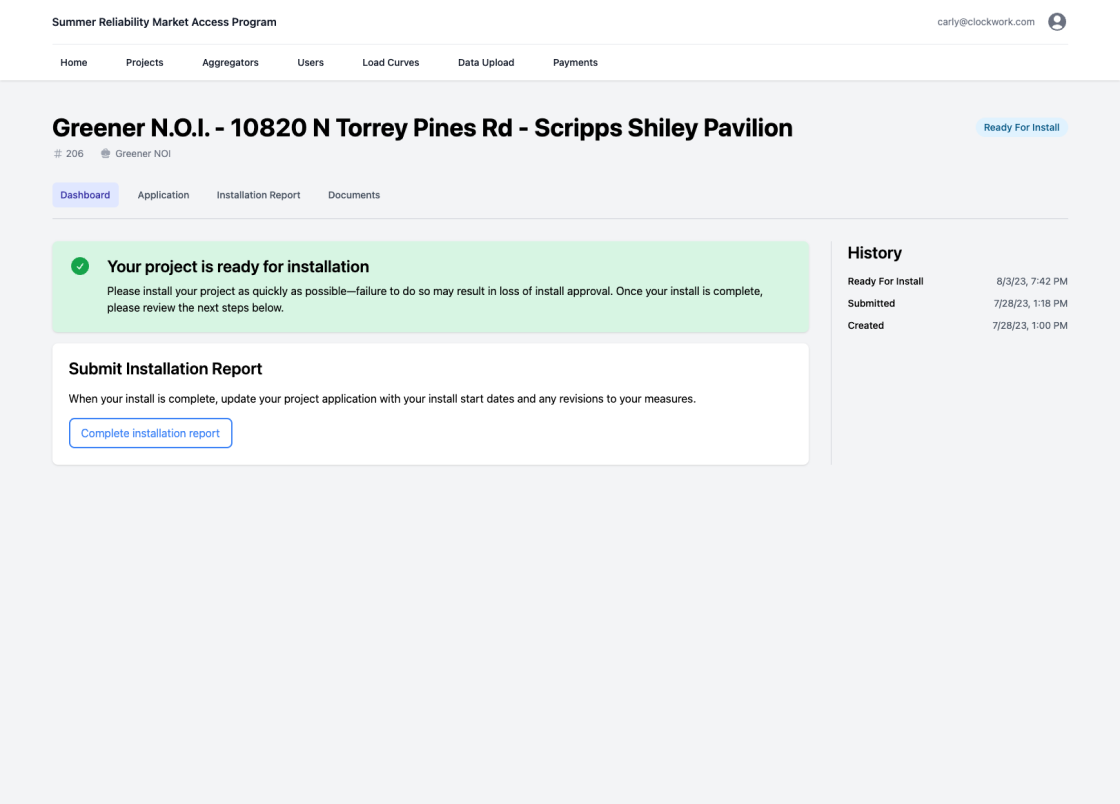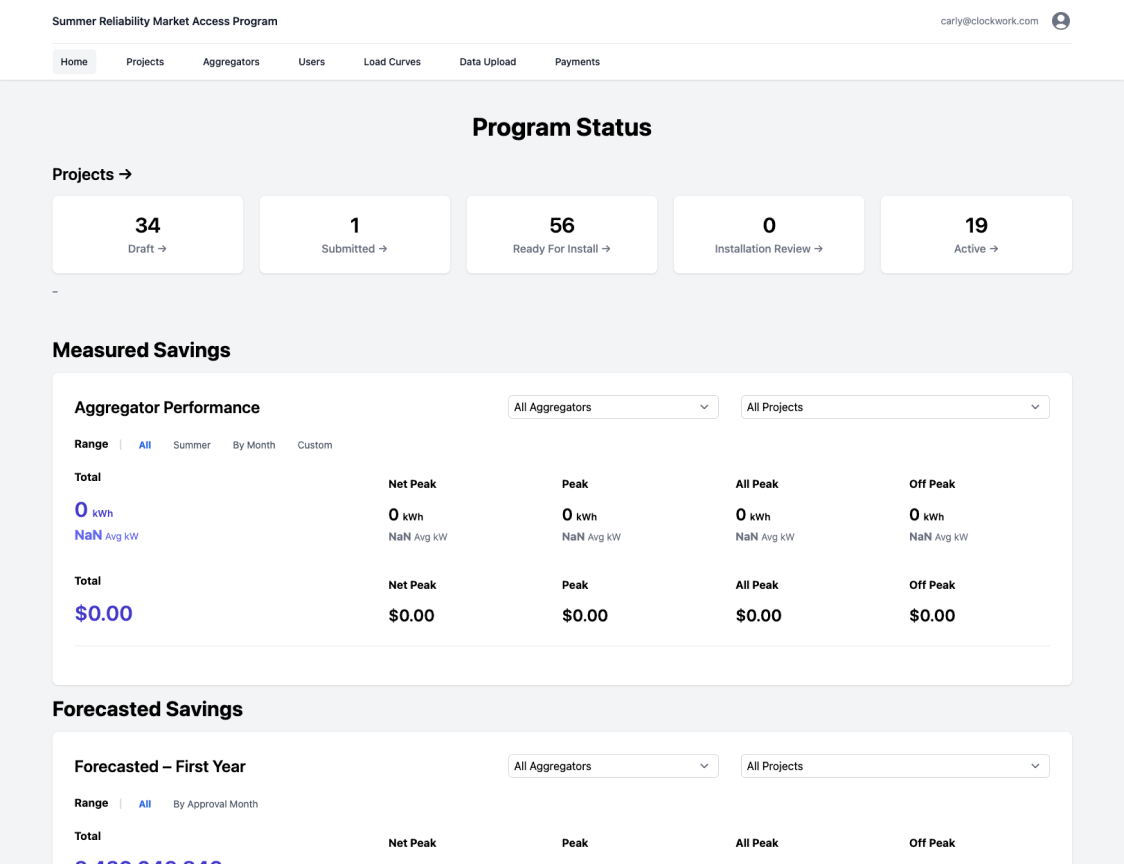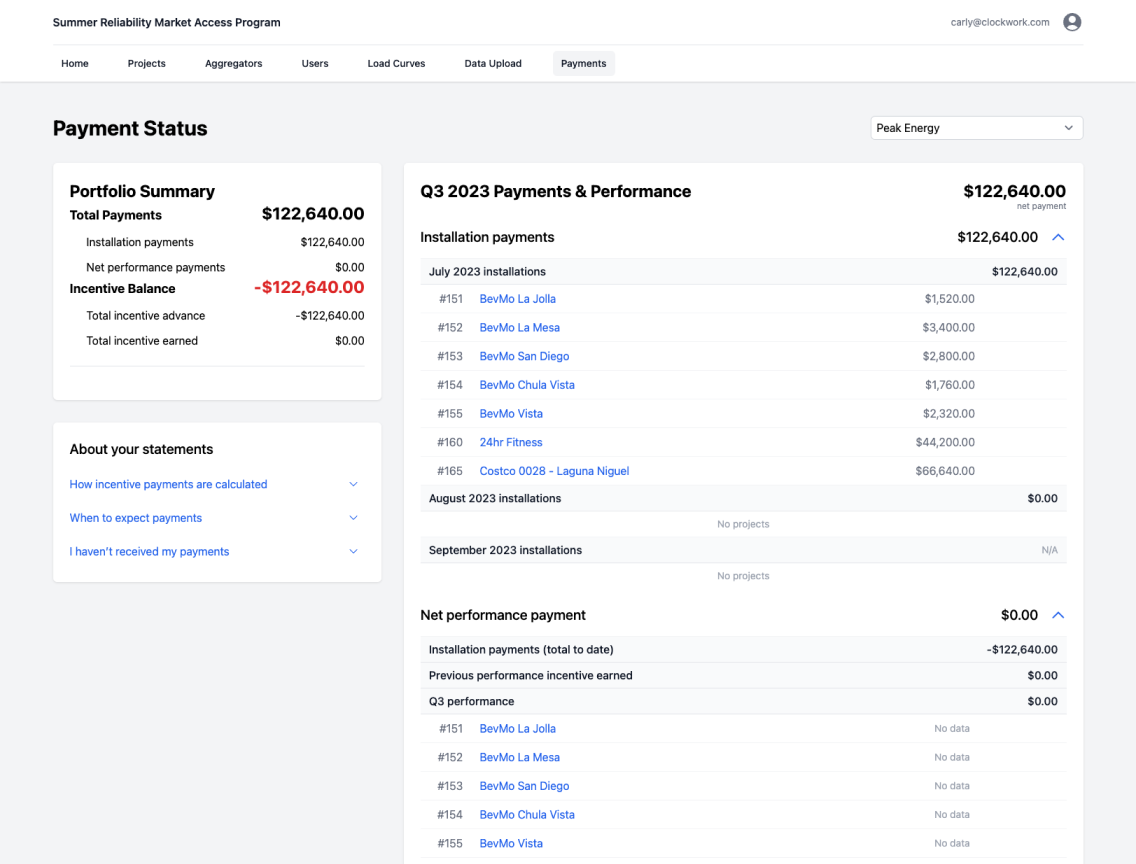California Public Utilities Commission Summer Reliability Market Access Program
The California Public Utilities Commission (CPUC) needed to incentivize Californian businesses to save energy, fast. We helped them create a completely new tool to manage the SRMAP – Summer Reliability Market Access Program – so business could earn incentives and save energy by making their buildings more efficient.
-
Product design & strategy
Carly Nixon
-
Development
Jake Bathman, Jacob Baker-Kretzmar, Shawn Jones
-
Delivery lead (DL)
Amareya Allen-Dabney
-
Client manager
Mary Marks
In this project
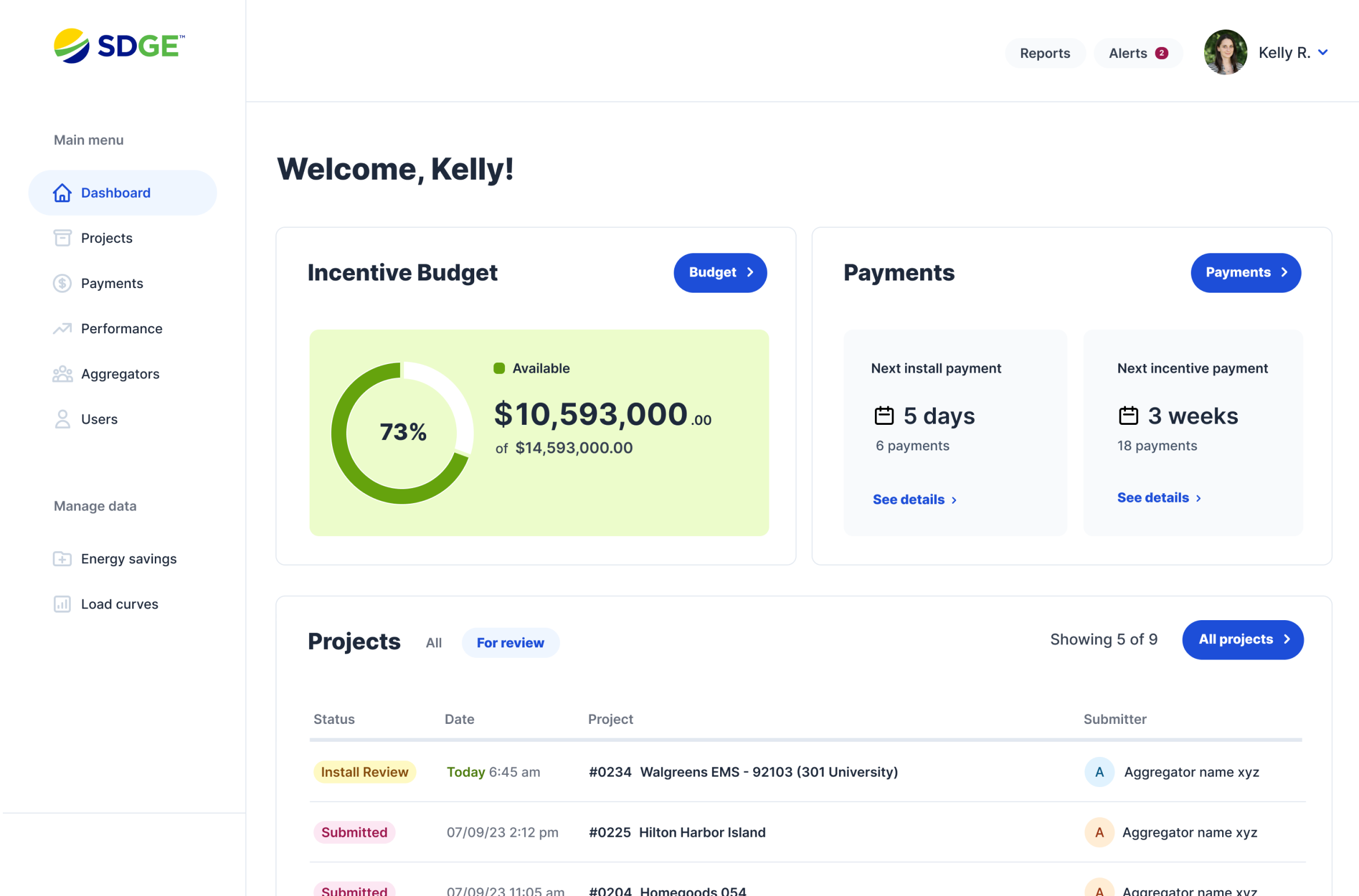
01 Problem
The $14 million energy-savings incentive program was being run on emails and spreadsheets. There was no way to sustainably manage all these projects long term, let alone calculate and deliver all the incentives they would be earning.
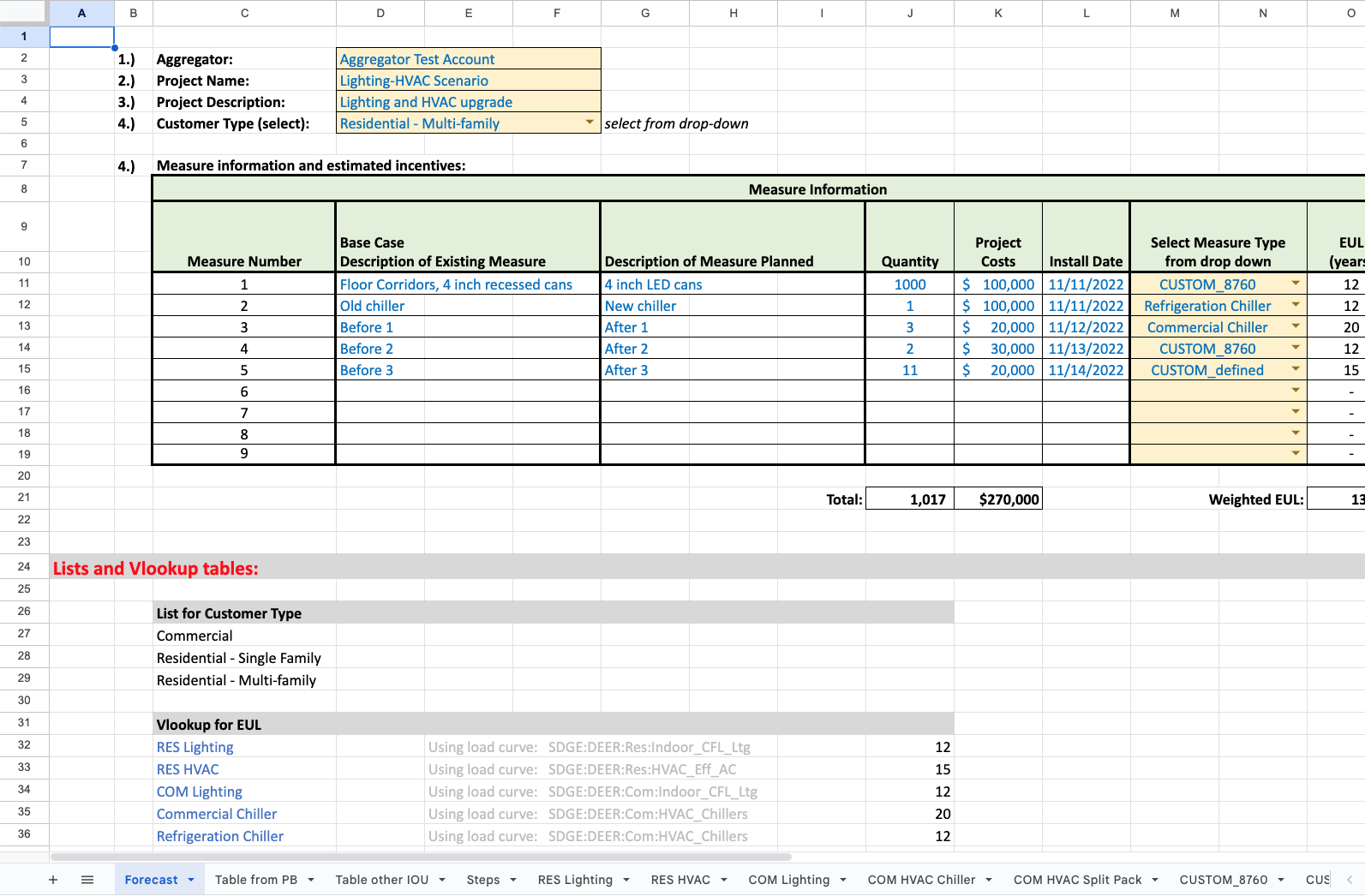
The client came to us with an in-depth, 45-page requirements document that helpfully captured everything they needed in a new project management tool (or so they thought).
Building a tool that followed these requirements was going to create a feature-rich app with a lot of bells and whistles – but it become pretty clear that these features weren’t going to actually meet user needs or business needs. I proposed a different, human-centered approach
02 Design sprint
I lead a human-centered approach to defining this new tool, starting with a remote design sprint in Miro to quickly ramp up on the problem and get feedback from users.
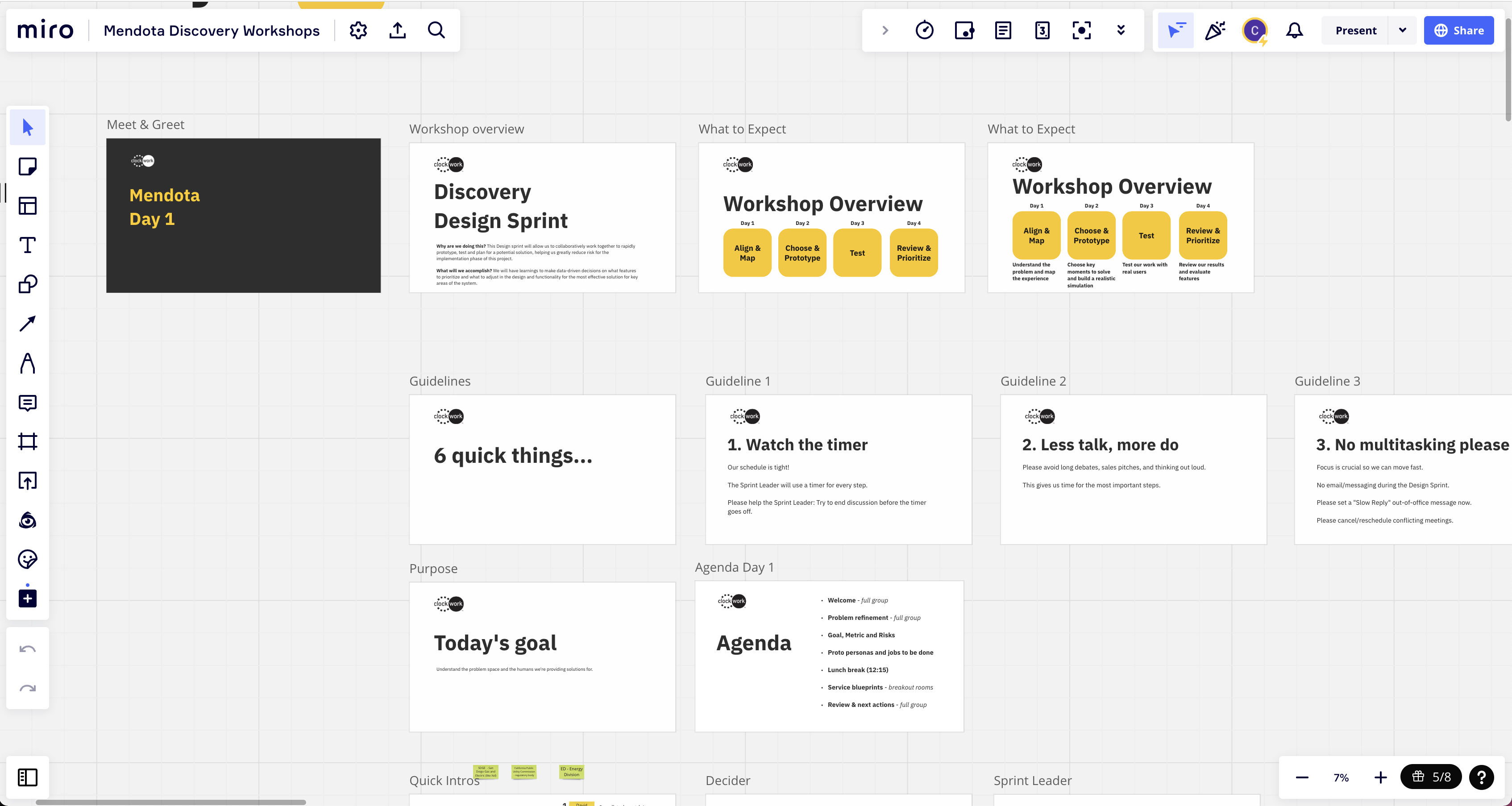
Mapping the problem
We crafted proto personas then created a service blueprint to help map out this complex B2B problem space.
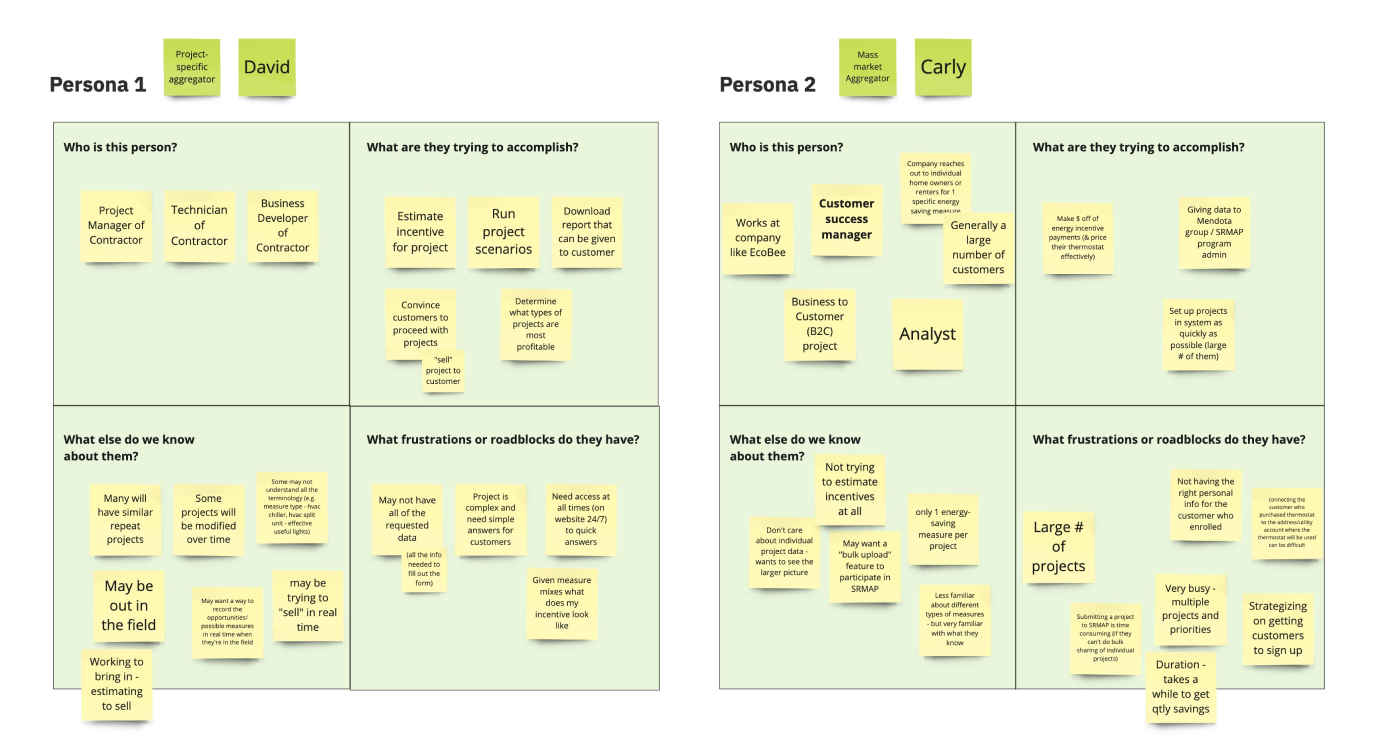
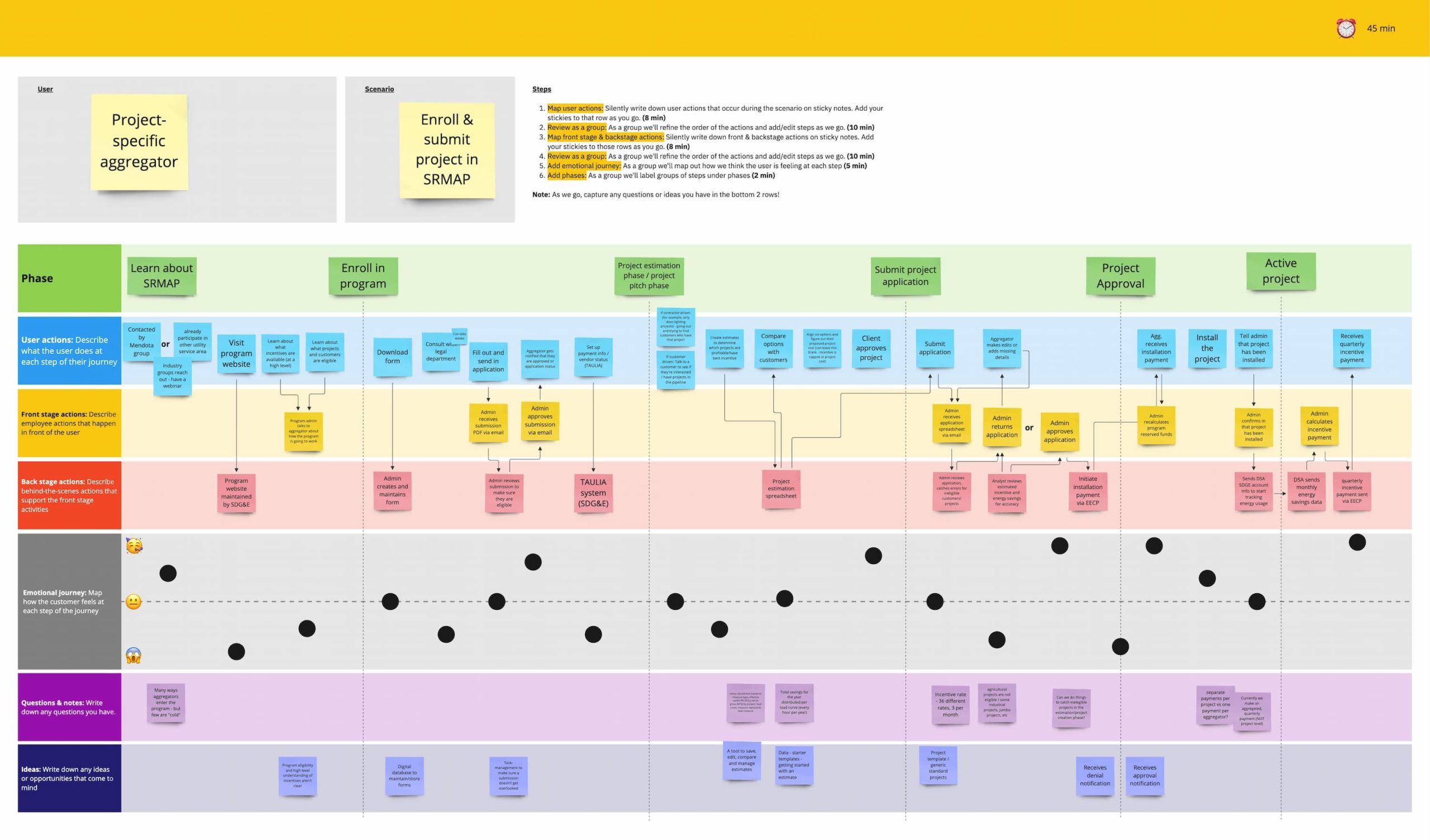
Identifying product goals & vision
Taking what we learned from the design sprint, I defined 5 key product goals that would help the CPUC achieve its ultimate goal of reducing energy usage:
- Drive aggregator enrollment and ongoing participation
- Drive project creation and installation, particularly in peak use periods
- Reduce the amount of time from estimate to installation
- Help admins meet regulatory reporting requirements
- Help admins stay within the program incentive budget
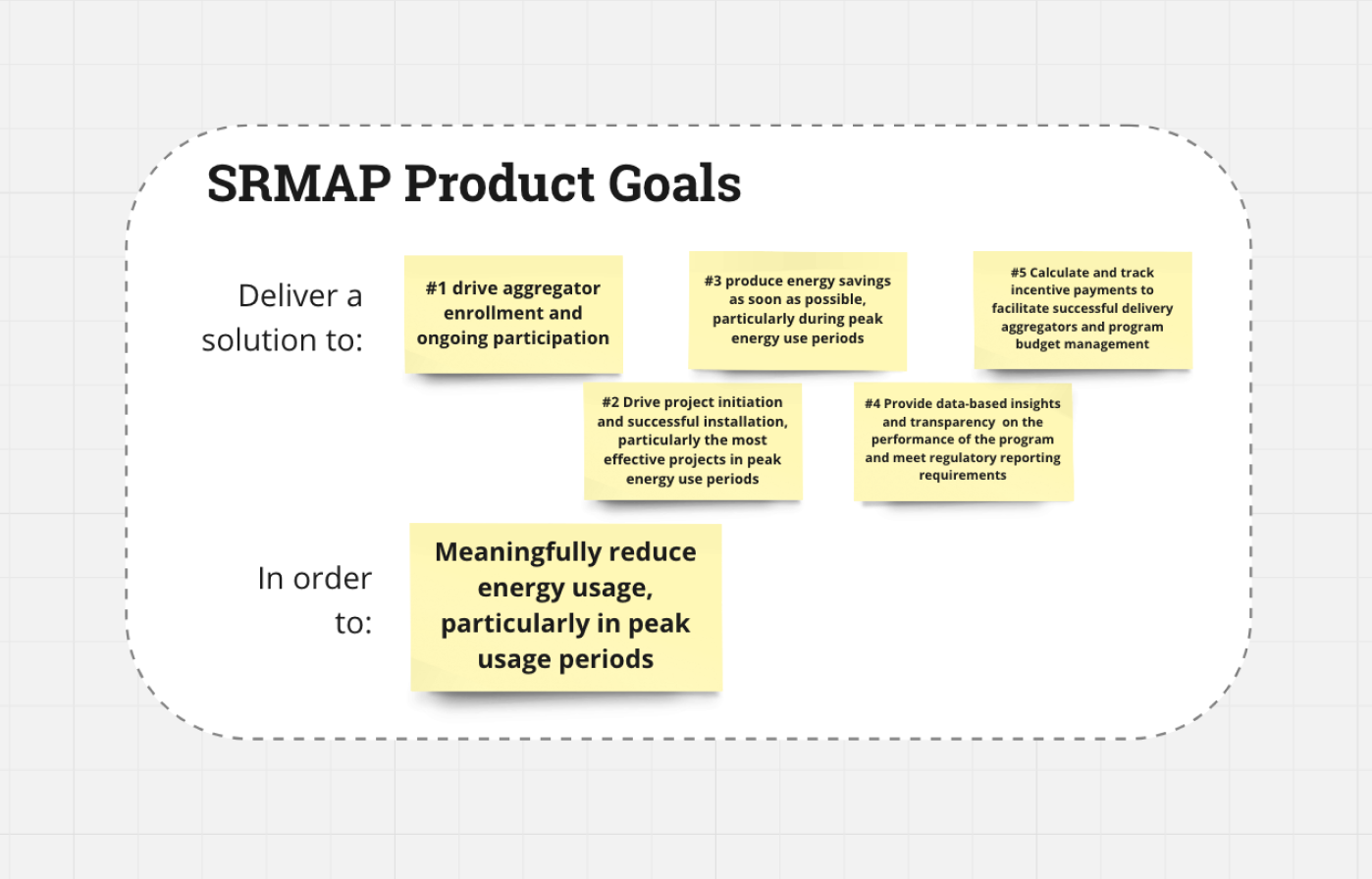
Testing with users
From there, we identified that the estimation and application experience would be key functionality that could make our break our app. After some group ideation, I created a quick wireframe prototype in Figma that we tested with users over zoom.
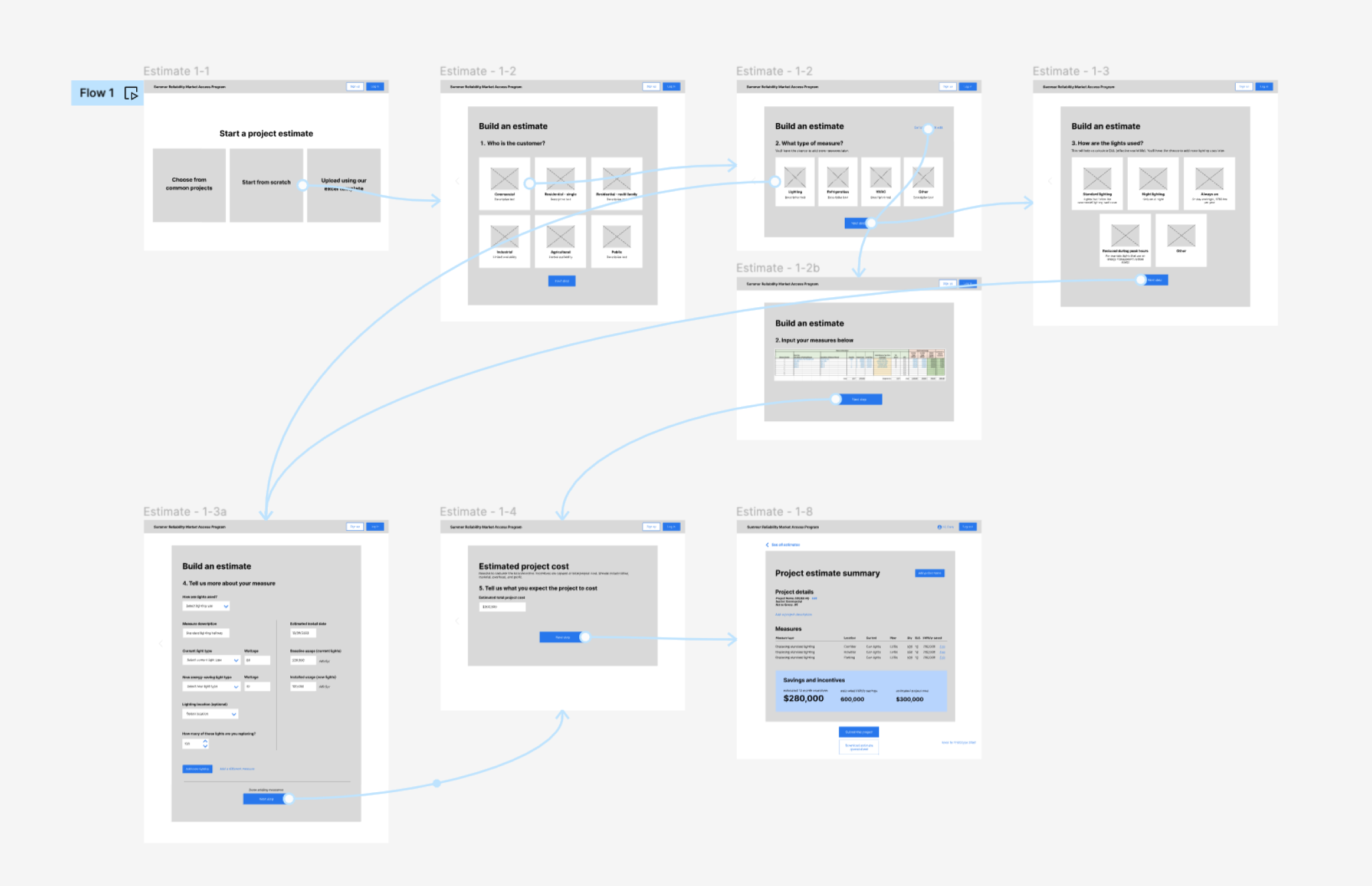
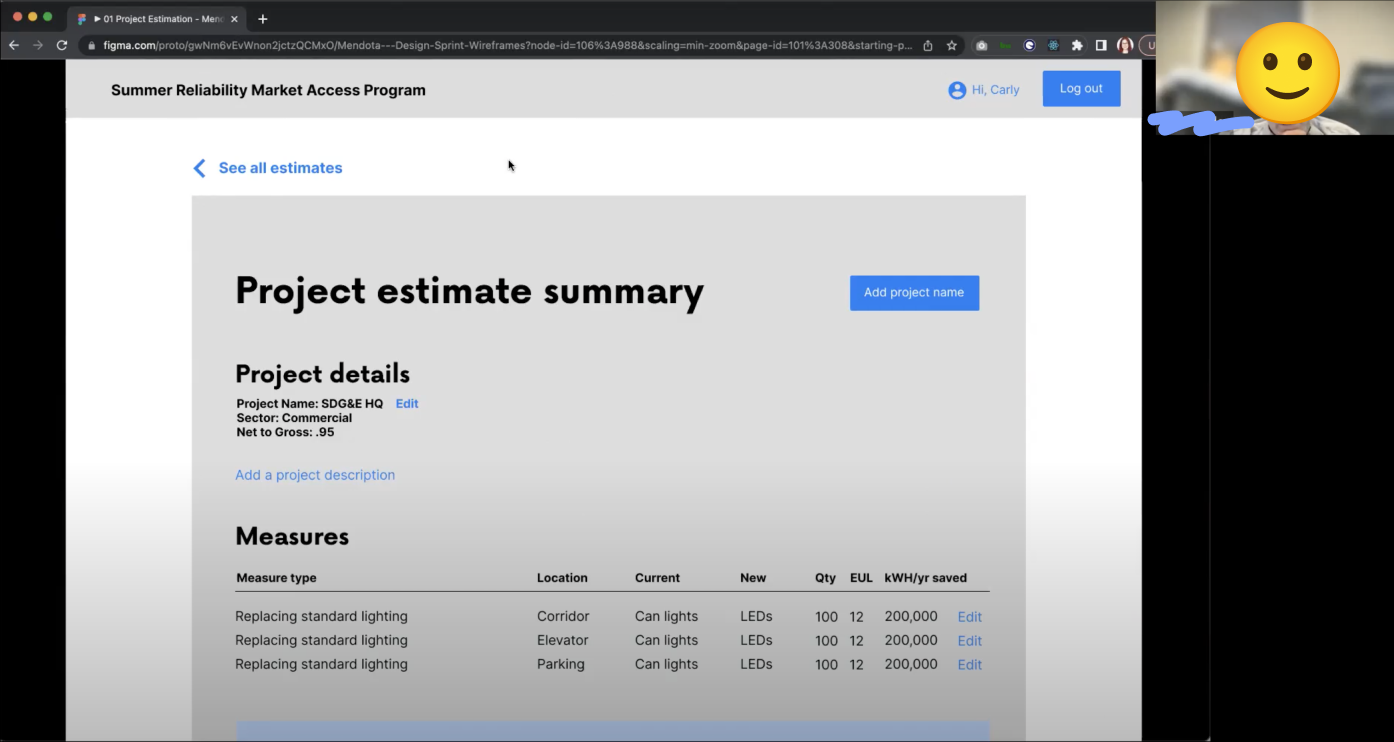
Reviewing results
We aligned on results from our prototype using collaborative note taking and a Lean UX test scorecard in Miro.
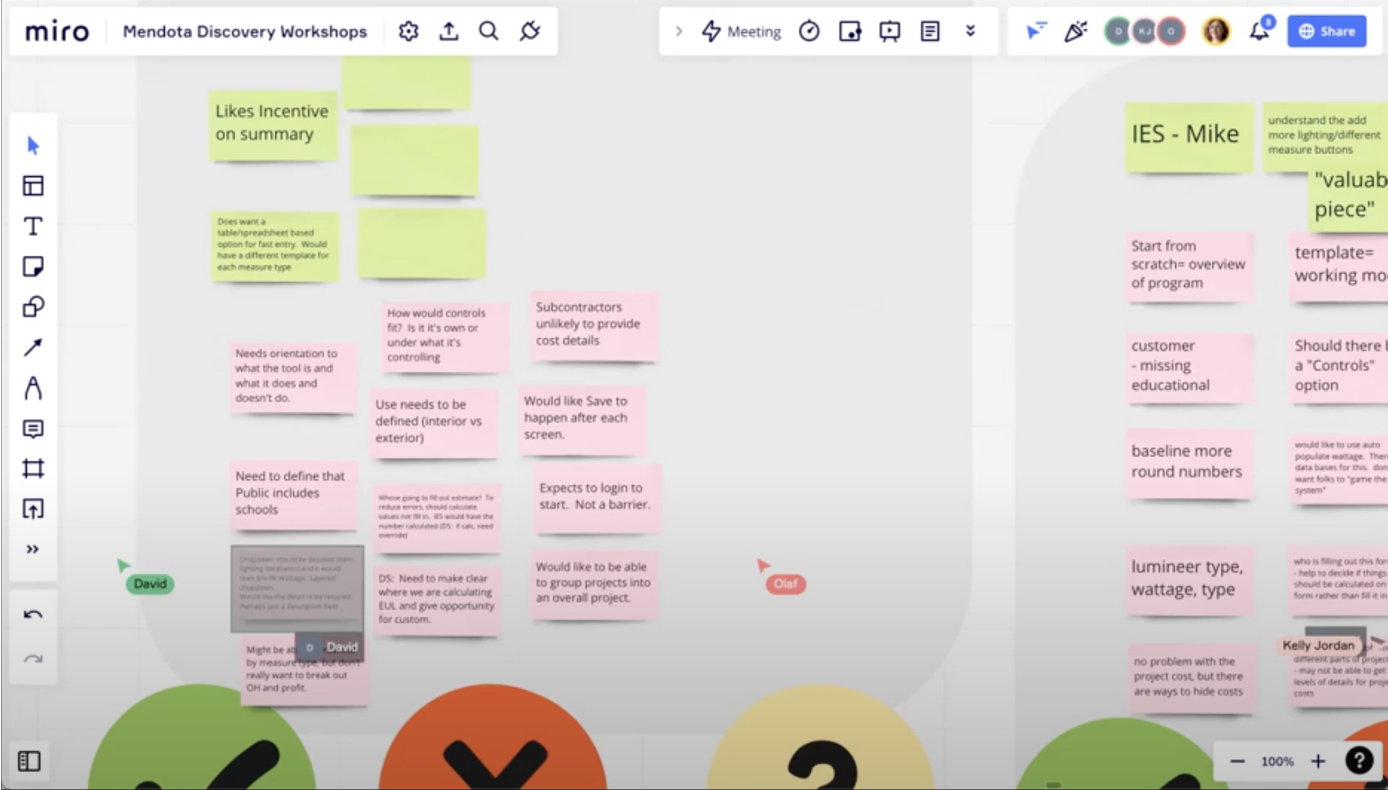
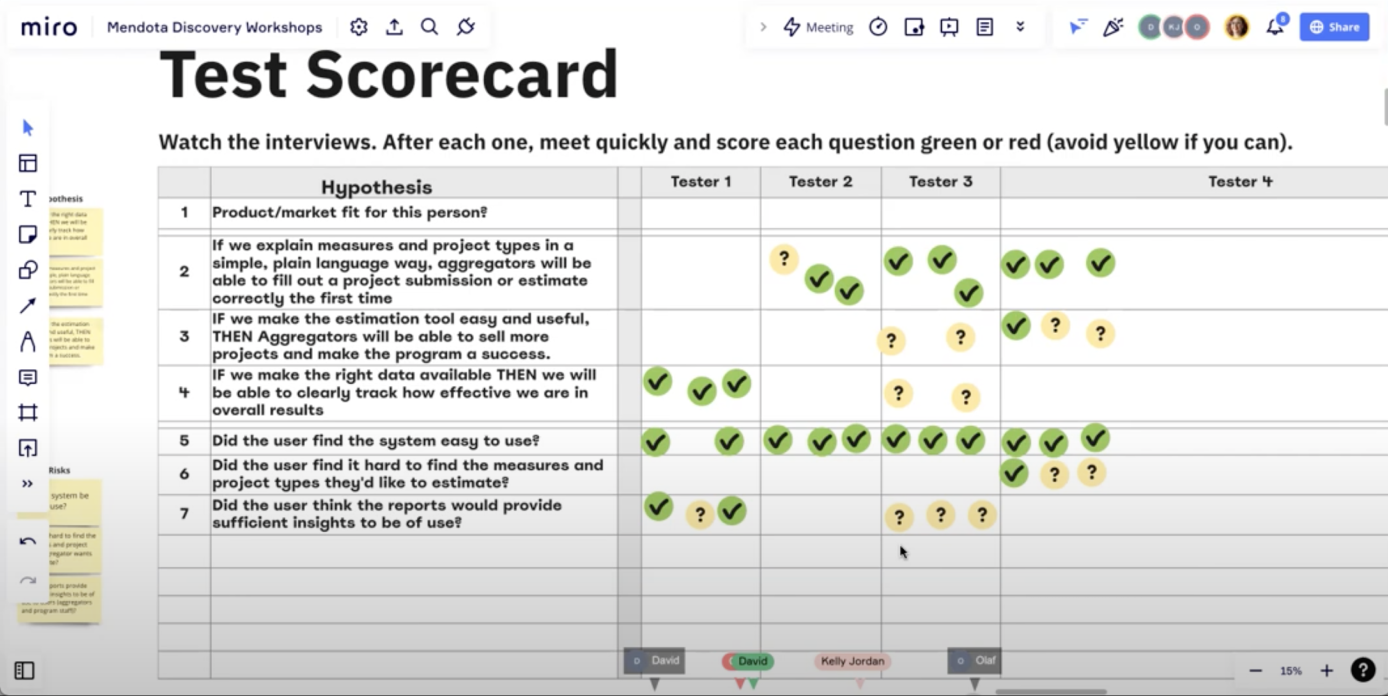
Mapping key features for Beta release
Next, I mapped out high-level features that we generated in group ideation to achieve these goals, organized into themes and prioritized based on value, level of effort, and risk/unknowns. I also recommended a beta release with a small, trusted group of aggregators to pilot the critical estimating and project application features and deliver value as quickly as possible.
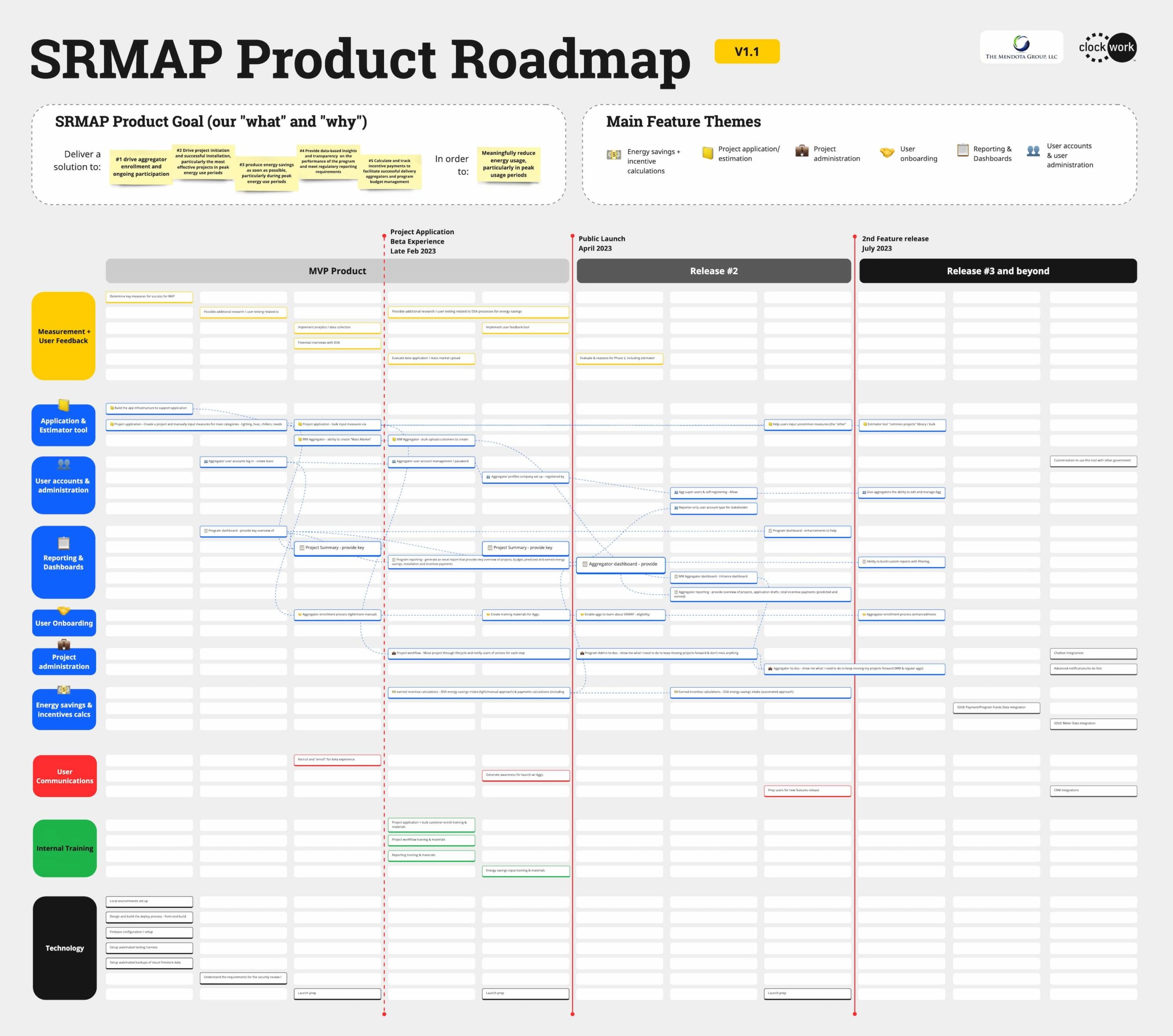
03 Development
I helped shape our project team’s agile, dual-track approach, where I worked a sprint ahead to make sure our features were aligned with user needs and business needs before heading into development.
I did activities like:
- Leading discovery sessions with the client to determine business needs for each key feature
- Mapping out business processes to align the project team on functionality
- Wire-framing and collaborating with the project team to define tricky UI patterns
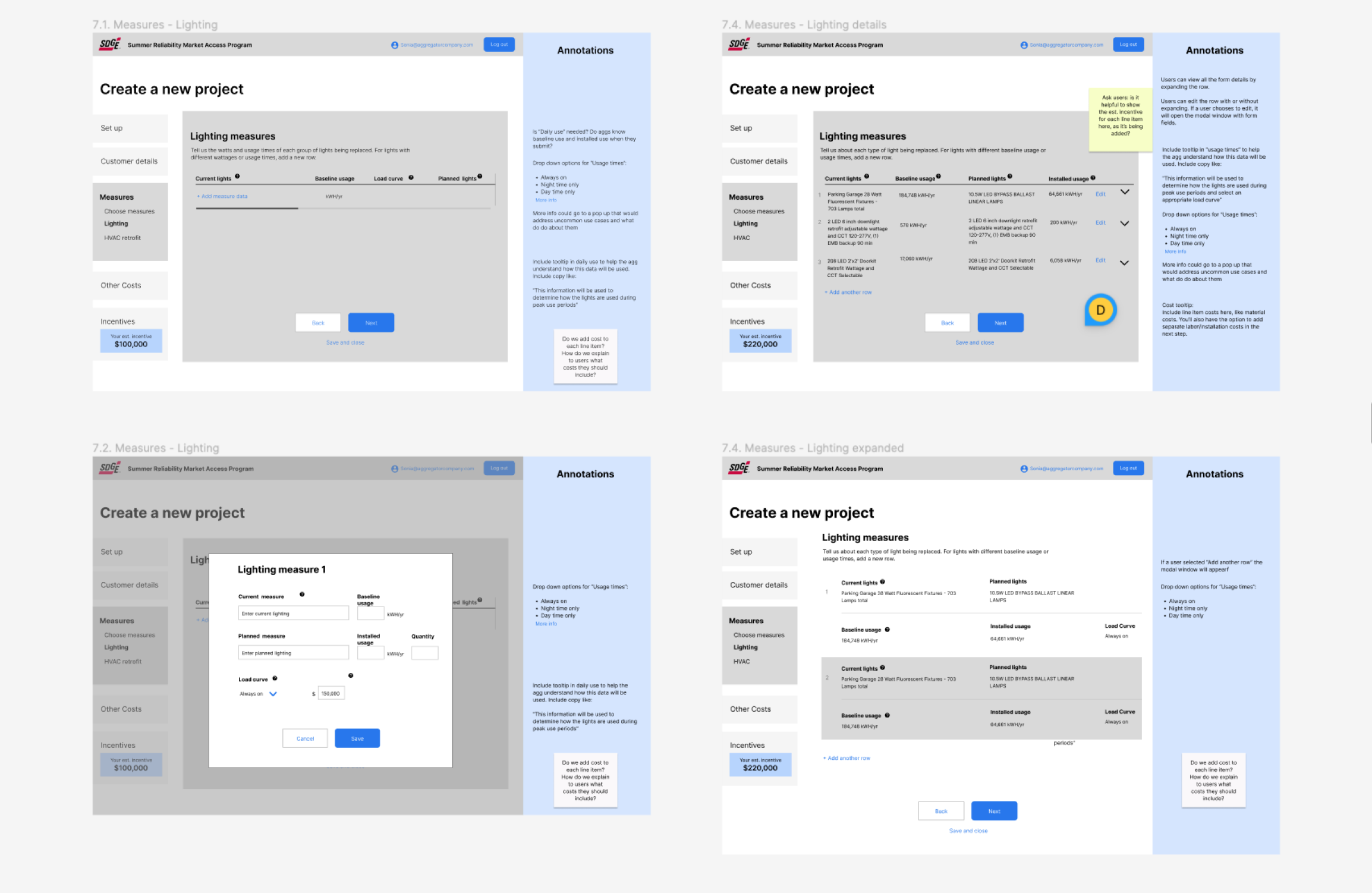
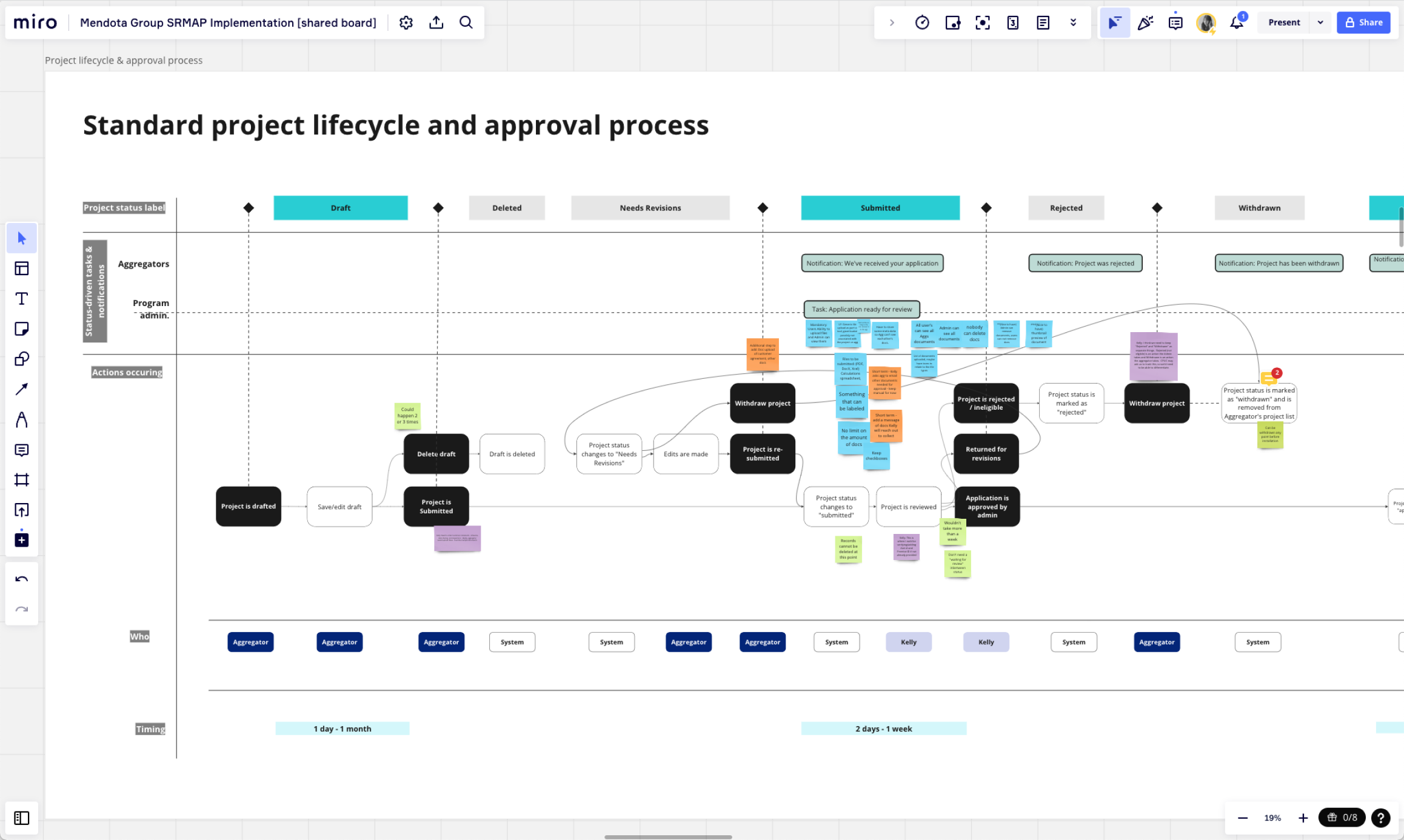
04 Beta launch
SRMAP iterations are still underway. Since launching in July of 2023, the tool is currently managing 76 projects, 13 aggregator companies, 26 users, and has currently captured 3.4 million kWh of energy savings.
